Hyundai Bayon VS Renault Scénic – Specs, Efficiency & Price Comparison
Which model is the better choice – the Hyundai Bayon or the Renault Scénic? We compare performance (100 HP vs 220 HP), boot capacity (411 L vs 545 L), efficiency (5.40 L vs 16.60 kWh), and of course, the price (20100 £ vs 34600 £).
Find out now which car fits your needs better!
The Hyundai Bayon (SUV) is powered by a Petrol engine and comes with a Manuel or Automatic transmission. In comparison, the Renault Scénic (SUV) features a Electric engine and a Automatic gearbox.
When it comes to boot capacity, the Hyundai Bayon offers 411 L, while the Renault Scénic provides 545 L – depending on what matters most to you. If you’re looking for more power, you’ll need to decide whether the 100 HP of the Hyundai Bayon or the 220 HP of the Renault Scénic suits your needs better.
There are also differences in efficiency: 5.40 L vs 16.60 kWh. In terms of price, the Hyundai Bayon starts at 20100 £, while the Renault Scénic is available from 34600 £.
Compare all the key specs now and find out which model fits your lifestyle best!
Hyundai Bayon
The Hyundai Bayon is a compact crossover that effortlessly merges practicality with modern design. Its sleek exterior and spacious interior make it an ideal choice for urban settings and longer journeys alike. With a focus on comfort and connectivity, this vehicle provides a smooth driving experience paired with advanced technology features.
details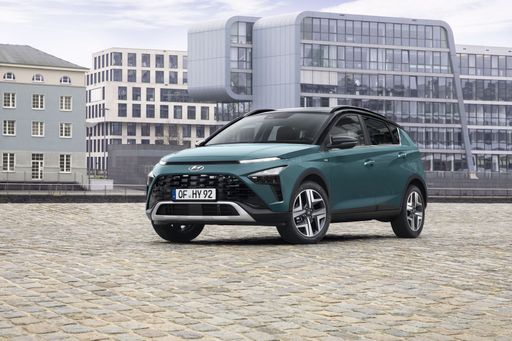 @ hyundai.news
@ hyundai.news
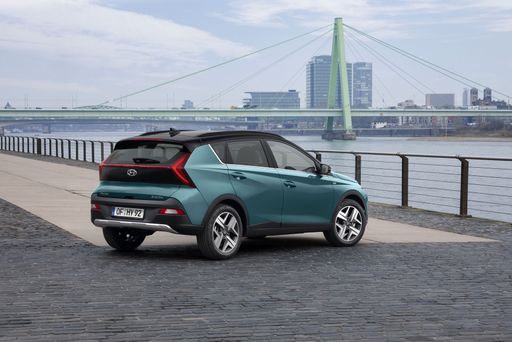 @ hyundai.news
@ hyundai.news
 @ hyundai.news
@ hyundai.news
 @ hyundai.news
@ hyundai.news
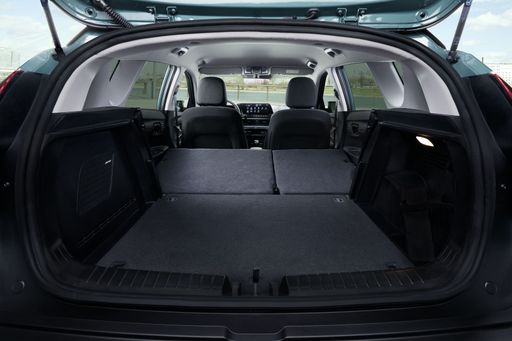 @ hyundai.news
@ hyundai.news
Renault Scénic
The Renault Scénic, with its distinctive design, captures attention through its sleek and modern aesthetic. Its interior is thoughtfully crafted, offering ample space and comfort for family travel or long journeys. The Scénic stands out with a strong emphasis on practicality, making it an ideal choice for those seeking both style and functionality in a vehicle.
details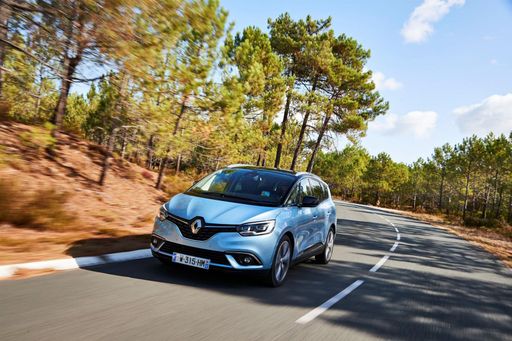 @ Renault
@ Renault
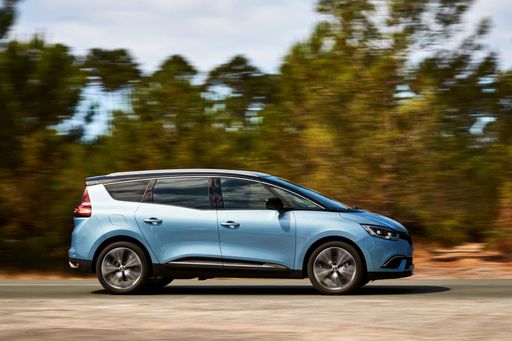 @ Renault
@ Renault
 @ Renault
@ Renault
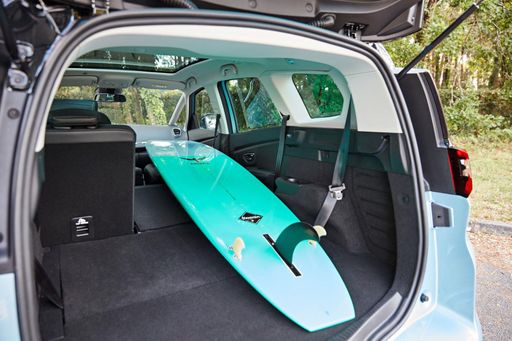 @ Renault
@ Renault
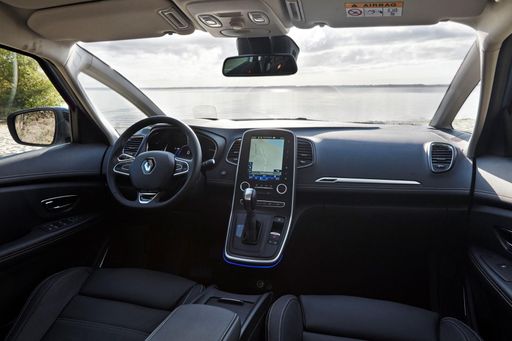 @ Renault
@ Renault

|

|
|
|
|
Costs and Consumption |
|
|---|---|
|
Price
20100 - 25800 £
|
Price
34600 - 44000 £
|
|
Consumption L/100km
5.4 - 5.5 L
|
Consumption L/100km
-
|
|
Consumption kWh/100km
-
|
Consumption kWh/100km
16.6 - 17.5 kWh
|
|
Electric Range
-
|
Electric Range
420 - 598 km
|
|
Battery Capacity
-
|
Battery Capacity
-
|
|
co2
124 g/km
|
co2
0 g/km
|
|
Fuel tank capacity
40 L
|
Fuel tank capacity
-
|
Dimensions and Body |
|
|---|---|
|
Body Type
SUV
|
Body Type
SUV
|
|
Seats
5
|
Seats
5
|
|
Doors
5
|
Doors
5
|
|
Curb weight
1170 - 1195 kg
|
Curb weight
1822 - 1927 kg
|
|
Trunk capacity
411 L
|
Trunk capacity
545 L
|
|
Length
4180 mm
|
Length
4470 mm
|
|
Width
1775 mm
|
Width
1864 mm
|
|
Height
1500 mm
|
Height
1571 mm
|
|
Payload
460 - 465 kg
|
Payload
514 - 518 kg
|
Engine and Performance |
|
|---|---|
|
Engine Type
Petrol
|
Engine Type
Electric
|
|
Transmission
Manuel, Automatic
|
Transmission
Automatic
|
|
Transmission Detail
Schaltgetriebe, Automat. Schaltgetriebe (Doppelkupplung)
|
Transmission Detail
-
|
|
Drive Type
Front-Wheel Drive
|
Drive Type
Front-Wheel Drive
|
|
Power HP
100 HP
|
Power HP
170 - 220 HP
|
|
Acceleration 0-100km/h
11.3 - 12.4 s
|
Acceleration 0-100km/h
7.9 - 8.6 s
|
|
Max Speed
176 - 179 km/h
|
Max Speed
150 - 170 km/h
|
|
Torque
172 - 200 Nm
|
Torque
280 - 300 Nm
|
|
Number of Cylinders
3
|
Number of Cylinders
-
|
|
Power kW
74 kW
|
Power kW
125 - 160 kW
|
|
Engine capacity
998 cm3
|
Engine capacity
-
|
General |
|
|---|---|
|
Model Year
2024
|
Model Year
2025
|
|
CO2 Efficiency Class
D
|
CO2 Efficiency Class
A
|
|
Brand
Hyundai
|
Brand
Renault
|
Hyundai Bayon
Introducing the Hyundai Bayon: A New Era in Compact SUVs
The Hyundai Bayon, a compact SUV designed with urban adventurers in mind, is making waves with its exceptional blend of style, performance, and technology. The brand has pulled out all the stops to ensure that the Bayon stands out in the crowded SUV market, offering a vehicle that is both practical and innovative.
Sleek Design and Cutting-Edge Aerodynamics
The Bayon features a striking exterior design, characterised by its bold lines and angular shapes. With a length of 4180 mm, a width of 1775 mm, and a height of 1500 mm, the Bayon commands attention with its modern appeal and aerodynamic efficiency. These dimensions not only contribute to its sleek design but also enhance fuel efficiency, achieving an impressive 5.4 L/100 km.
Engine Performance and Specifications
Under the bonnet, the Bayon is powered by a 1.0-litre T-GDI petrol engine, delivering a robust 100 PS or 74 kW. This engine is available with either a manual or automatic gearbox, meeting varied driver preferences. The front-wheel-drive system complements its urban-centric design, ensuring a smooth and responsive ride.
Maximised Interior Space and Comfort
The spacious interior of the Bayon accommodates up to five passengers comfortably. The vehicle boasts a boot space of 411 litres, perfect for both everyday use and weekend getaways. The cabin is designed with practicality and technology in mind, with intuitive controls and ample storage options.
Advanced Technology and Connectivity
Hyundai has equipped the Bayon with state-of-the-art technology to enhance the driving experience. The SUV features a high-resolution touchscreen, offering seamless connectivity with Apple CarPlay and Android Auto. Safety is also a priority, with multiple driver assistance systems including lane-keeping assist and forward collision avoidance assist.
Environmental Efficiency
Despite its powerful performance, the Bayon achieves a respectable CO2 efficiency class of D, with emissions as low as 122 g/km. This balance between performance and environmental responsibility makes the Bayon an attractive option for conscientious drivers.
Affordability and Market Appeal
The Hyundai Bayon is competitively priced, ranging from €22,900 to €29,600. Its affordable running costs, estimated at 32.3 to 36.4 cents per kilometre, further enhance its appeal to budget-conscious consumers. With monthly costs ranging from €806 to €909, the Bayon provides excellent value without compromising on features or performance.
Final Thoughts
The Hyundai Bayon truly stands out in the compact SUV segment, combining style, innovation, and practicality in an appealing package. It offers a versatile driving experience suited to the demands of modern urban living, making it a top contender in its class. As Hyundai continues to champion forward-thinking design and technology, the Bayon is a testament to the company's ongoing commitment to excellence.
Renault Scénic
Introducing the All-New Renault Scénic: A Leap into the Future
The Renault Scénic has long been a family favourite, and with its latest iteration, it offers a blend of advanced technology, impressive performance, and eco-friendly credentials. The 2024 model year makes a grand entrance with its electric-only range, showcasing the brand's commitment to a sustainable future.
Powerful Performance Range
The latest Renault Scénic range offers two power specifications to cater to different driving needs. With power outputs ranging from 170 to 220 PS, and a torque between 280 and 300 Nm, there's plenty of punch to ensure a dynamic driving experience. Choose the variant that suits your lifestyle, whether it's the Comfort Range with a satisfying 420 km electric range or the Long Range capable of 598 km on a full charge.
Sleek Design and Comfort
Renault has effectively transformed the Scénic into a suave SUV, integrating both style and functionality. It measures 4470 mm in length, 1864 mm in width, and stands 1571 mm tall – dimensions that promise ample interior space while maintaining a sporty silhouette. The five-seat configuration ensures comfort, with a spacious 545-litre boot capacity making it ideal for family trips or weekend getaways.
Efficiency at Its Core
With an efficiency of 16.7 to 17.6 kWh per 100 km, the Renault Scénic provides an excellent balance of performance and economy. On top of that, it maintains a CO2 efficiency class of A, delivering 0 g/km, which is a testament to its dedication to reducing environmental impact. Furthermore, the monthly cost ranges from €1021 to €1172, and €0.408 to €0.469 per km, ensuring the Scénic is economically sensible as well.
Innovative Technology Package
The Renault Scénic is packed with innovative technology to enhance the driving experience. The standard automatic transmission is complemented by a reduction gearbox, ensuring smooth and responsive acceleration. Multiple trim levels, including Evolution, Techno, Esprit Alpine, and Iconic, offer a variety of features to match your preferences.
Safety and Practicality
Safety is paramount in the Scénic, with its robust build and suite of advanced safety features. The model’s design also accounts for practicality, with a payload capacity ranging from 514 to 518 kg, making it fit for daily errands and heavy loads alike. Additionally, its top speed ranges up to 170 km/h, providing peace of mind on motorways.
Concluding Thoughts
Renault has truly pushed the boundaries with the new Scénic, creating an all-electric vehicle that marries sophistication with practicality. Whether navigating urban landscapes or exploring the open road, the Scénic delivers on both style and substance for the discerning eco-conscious driver.
The prices and data displayed are estimates based on German list prices and may vary by country. This information is not legally binding.
